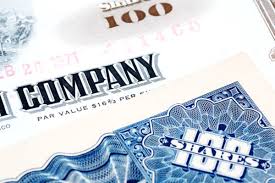THE IMPORTANCE OF BUY-SELL AGREEMENTS IN BUSINESS CONTINUITY
For business owners, a well-structured buy-sell agreement is essential for ensuring a seamless transition of ownership in the event of death, disability, or retirement. These agreements define who has the right to purchase ownership interests and at what price, mitigating potential disputes among partners, heirs, and buyers.
Valuation: A Critical Component
A properly structured buy-sell agreement includes a clear valuation method to determine the fair market value of a departing owner’s shares. Common valuation approaches include:
- Business appraisal – An independent assessment by a business valuation expert(s) based on fundamental business valuation methodologies and the prevailing market conditions.
- Formula-based calculations – Methods such as EBITDA multipliers, revenue multiples, or asset-based valuations.
To maintain fairness and accuracy, business owners should:
- Select an appropriate expert to determine the appropriate valuation methodologies that reflect the company’s fair market value.
- Review and update valuation methodologies regularly to align with market conditions.
- Avoid outdated valuation metrics, which can lead to financial disputes.
Lessons from Pappas v. B & G Holding Co.
A failure to update valuation terms led to a four-year legal battle in Pappas v. B & G Holding Co.:
- William Egan, a 50% owner of B & G Holding Co., passed away, leaving his interest to a beneficiary, Dean George Pappas.
- A pre-existing buy-sell agreement required the surviving partner, Eugene Leogrande, to purchase the shares at a predetermined price.
- Pappas contested the valuation, seeking a fair market assessment instead of the agreement’s preset formula.
- The court upheld the buy-sell terms, requiring Pappas to sell the shares for $318,348—likely based on an outdated rent-multiple valuation method.
Key Takeaways for Business Owners
- Review Buy-Sell Agreements Regularly – Ensure valuation methods reflect current market conditions. Outdated figures can significantly undervalue or overvalue a business.
- Update Your Valuation Annually – Some agreements require annual updates. These updates allow business partners the opportunity to assess value within their strategic planning process to identify ways in which to grow value.
- Prioritize Fair Market Value – Formula-based calculations become stale with new market data. Failing to update them may force reliance on outdated formulas. Market-driven valuations promote transparency and fairness.
Exit Strategies values control and minority ownership interests of private businesses for tax, financial reporting, and strategic purposes. If you’d like help in this regard or have any related questions, you can reach Joe Orlando, ASA, at 503-925-5510 or jorlando@exitstrategiesgroup.com.

 The answer, according to Santa Rosa California-based CPA Dan Prince, is to allocate income among the S-Corporation’s shareholders on a per-share basis in the pre-change period and in the post-change period as if the books were closed on the date of the ownership change. The shareholders agree to make what’s called a “Closing of the Books” election.
The answer, according to Santa Rosa California-based CPA Dan Prince, is to allocate income among the S-Corporation’s shareholders on a per-share basis in the pre-change period and in the post-change period as if the books were closed on the date of the ownership change. The shareholders agree to make what’s called a “Closing of the Books” election.
 Buy-sell agreements that contain a clause that values stock at less than fair market value can be disregarded for tax purposes. It is important to consider the requirements of
Buy-sell agreements that contain a clause that values stock at less than fair market value can be disregarded for tax purposes. It is important to consider the requirements of  It is tempting to select a formula approach to pricing shares when business partners come and go. After all, a formula is easy for everyone to understand, and in theory at least, inexpensive to apply. If you’re satisfied with getting to a price, any price, then congratulations – job done. But the goal is to arrive at a price that is fair to all concerned. This article discusses some of the unforeseen problems with buy-sell pricing formulas that we as valuation experts encounter frequently.
It is tempting to select a formula approach to pricing shares when business partners come and go. After all, a formula is easy for everyone to understand, and in theory at least, inexpensive to apply. If you’re satisfied with getting to a price, any price, then congratulations – job done. But the goal is to arrive at a price that is fair to all concerned. This article discusses some of the unforeseen problems with buy-sell pricing formulas that we as valuation experts encounter frequently. When it comes to valuing a business for tax filings, M&A transactions, ESOP’s and most other purposes, business appraisers are usually free to use all of the methodologies in their arsenal. But, when it comes to Buy-Sell Agreements that govern the sale or exchange of interests among closely-held business owners, many of these agreements specify a fixed amount or formula to price equity interests. Recently our firm analyzed the valuation and funding-related provisions used in thirteen buy-sell agreements that we encountered over the past several months.
When it comes to valuing a business for tax filings, M&A transactions, ESOP’s and most other purposes, business appraisers are usually free to use all of the methodologies in their arsenal. But, when it comes to Buy-Sell Agreements that govern the sale or exchange of interests among closely-held business owners, many of these agreements specify a fixed amount or formula to price equity interests. Recently our firm analyzed the valuation and funding-related provisions used in thirteen buy-sell agreements that we encountered over the past several months.

